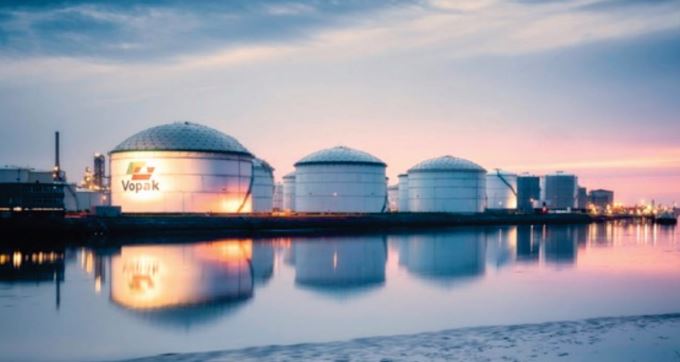
Maritime is not just a sector but a parallel economy, where various sectors of the economy meet.
Huma Baqai
“Maritime Blindness” is not an option anymore. In the twenty-first century, the concept of the Blue Economy has become increasingly popular. The concept was first coined by Gunter Pauli in 2010, the author of the book The Blue Economy: 10 Years, 100 Innovations and 100 Million Jobs. Oceans are now seen as drivers of human development, source of food material, and space.
The Blue Economy includes established conventional ocean industries like fisheries, tourism, and maritime transport, as well as new and emergent activities like offshore renewable energy, aquaculture, seabed extractive operations and marine biotechnology, and bioprospecting. The Blue Economy is central to the green ecosystem. Oceans produce up to 70 percent of the oxygen we breathe, while nearly 40 percent of the world’s population depends on marine and coastal biodiversity for livelihood. For these reasons, the “blue” component of the “green” transition cannot be overlooked.

The Blue Economy is the future of sustainable growth for the world and Pakistan. It’s our path from scarcity to abundance. It has the potential to create jobs for our jobless youth, stimulate the anemic economic growth, mitigate the impact of climate change, and help address the scarcity of food for our growing population. The total worth of Pakistan’s blue economy sector is more than $100 billion, however, the annual revenue generated is only $450 million. Pakistan had declared the year 2020 as the blue economy year and has also included the Blue Economy in the 2025 Vision Goal of the State.
The Blue Economy of Pakistan offers a way forward through a range of maritime sectors peculiar to the geostrategic and economic constraints of the country. Pakistan falls in the lower-middle-income bracket state, with the economy growing at less than a 3 percent growth rate, whereas the Pakistan Institute of Development Economics suggests for Pakistan a potential of sustainable 8 percent growth annually.
This seemingly unachievable target is possible if Pakistan transitions from a traditional economy to the Blue Economy to address the challenges it faces and align its economy to global trends of sustainable growth. CPEC is the window of opportunity for Pakistan to develop a Maritime industry and fully utilize the potential of the Blue Economy. A Pentagon report notes that China’s Belt and Road Initiative (BRI) is associated with pipelines and port construction projects in Pakistan. But with the help of those projects, China “seeks to become less reliant on transporting energy resources through strategic choke points, such as the Strait of Malacca”.
From Pakistan’s perspective, this collaboration complements its geo-economic thrust with its geostrategic compulsions. In 2020-21, China participated in a joint naval Exercise with Pakistan and also supplied strike capable Unmanned Aircraft Systems to Pakistan. In 2015, Pakistan purchased eight Yuan class submarines for more than $3 billion. In 2017 and 2018, China sold four naval frigates to Pakistan. Pakistan is also a member of the China-led Asia-Pacific Space Cooperation Organization.
South Asian states such as India and Bangladesh are earning billions of dollars from the blue economy. Pakistan’s present-day maritime revenue projection stands at $183 million which is far behind our neighbors including India and Bangladesh, whose estimated projections stand at $5.6 and $6 Billion respectively. Important aspects of the Blue Economy have been ignored over the years, although the actual potential of Pakistan’s blue economy is estimated to be more than US$ 100 billion.

China is also now more focused on Maritime Silk Route rather than the Belt and Road Initiative. Thus, improving the status of mangroves and the eco-friendly development of ports mentioned in CPEC makes good sense (blue partnership). The importance of the blue economy is evident from the fact that life below water has been incorporated into sustainable development goals (SDGs).
Pakistan shares maritime boundaries with Iran, Oman, and India; claims an enormous Exclusive Economic Zone of 240,000 sq km and a continental shelf giving an additional 50,000 sq km. Despite a tremendously rich coast and a huge mass of water at its disposal, the country has not been able to develop into a true maritime nation. The Majority of the world’s population is concentrated around the coasts, however, in case of Pakistan, most of the coastline is scarcely inhabited. Innovative interventions are needed.
As per a study, Pakistan’s coastal areas are rich in bio-productivity and biodiversity as they provide huge breeding grounds for commercially important fisheries with a potential resource worth more than $2 billion annually. Pakistan’s fishing sector only contributes 0.4% to 0.6 % percent to the country’s GDP. This is indicative of the untapped potential and growth prospects of the sector.
Effective management of The Blue Economy could fetch the global economy $1.5 trillion. As per Global Investment trends, 35% of global green investment is in the power sector, 29% in transport, and 11% in water infrastructure; Pakistan’s progress is not stellar. The blue economy in Pakistan, despite the BRI focus on it and Pakistan being a part of it, has not developed sufficiently. It remains a very unexplored domain that does not receive the requisite attention of policymakers. Pakistan’s maritime sector is confronted with governance issues, poor technology, marine pollution, and the destruction of mangroves. A globally sustainable model has been made unsustainable in Pakistan because of the aforementioned issues.
To explore the blue economy potential of Pakistan fully, there is a need for long-term and consistent policies along with monitoring and evaluation mechanisms, besides seeking inclusive and holistic contributions from all stakeholders. We need policy reforms to boost investors’ confidence, and development of special maritime industrial zones, we also have to work towards the concept of “greener shipping” by 2050. Pakistan critically needs to fill the gap between education and maritime research and improve industry-academia linkages to support policies through research.

The writer is Rector, Millennium Institute of Technology and Entrepreneurship (MiTE), Karachi

